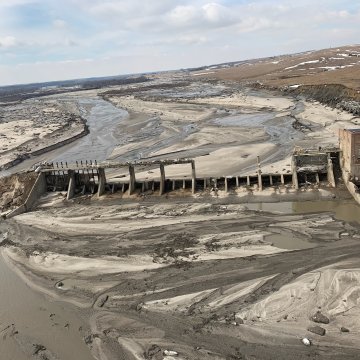Explore our blog featuring articles about farming and irrigation tips and tricks!
4 Ways To Bring Flooded Fields Back

By: University of Nebraska
Nebraska producers have been here before.
In 2011, the flooded Missouri River wreaked havoc on the farm fields in the Missouri River basin. John Wilson, Extension educator in Burt County, Nebraska, says there are lessons learned from that time that are applicable today. “From our experience in 2011, farmers found that they needed to work on things in three stages to repair flood-damaged fields,” he says in an article posted at the University of Nebraska-Lincoln Crop Watch.
1. REMOVE DEBRIS AND SEDIMENT.
There are two general types of debris: plant material and other debris. The kind of “other” debris will make a difference on how it is handled. Plant material, primarily cornstalks and trees, can be burned on the tract of land where it was found (if it is zoned agricultural) and the ashes buried there.
If a layer of cornstalks or other crop residue isn’t too deep, it can be incorporated into the soil with normal tillage operations. One concern, and this will be a recurring theme, is to not perform tillage when the soil is too wet. This will cause compaction and create more of a problem than it solves. Also, burying high-carbon crop residues may temporarily tie up nitrogen in the soil as microbes break it down.
In 2011, Nebraska farmers encountered varied from a lot of smaller “junk” such as tires, posts, and boards to propane tanks and vehicles to wooden decks, cabins, and whole homes that had floated into fields. There are two options for this type of debris. It can be buried onsite if the land is zoned agricultural, or it can be taken to an approved landfill.
In the case of buildings, an asbestos inspection may be required by the Nebraska Health and Human Services (NHHS). Call 402/471-0386 to see if you need an inspection. For other information on handling miscellaneous debris, contact the Waste Management Section of the Nebraska Department of Environmental Quality (NDEQ) at 402/471-4210.
Sedimentation from floods can pose a great challenge for crop production on agricultural land. The difference in texture of the deposition and the native soil below can cause major production issues. Burt says that in 2011, deposits varied from 1 inch or 2 to over 30 feet deep. The depth of the deposition will determine how it is best handled:
Stay up to date on all T-L news and get alerts on special pricing!


